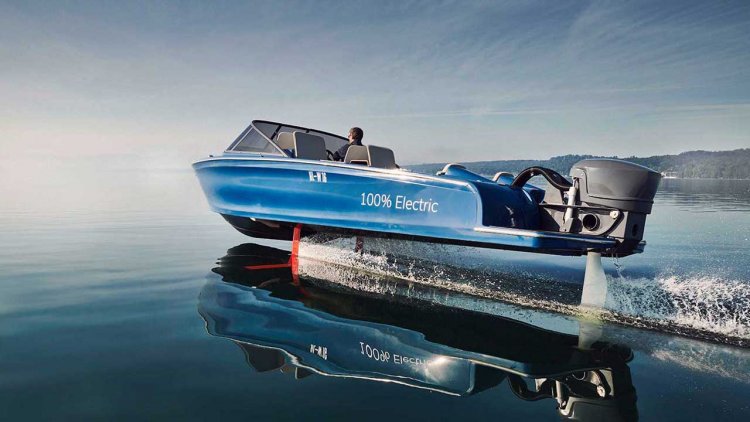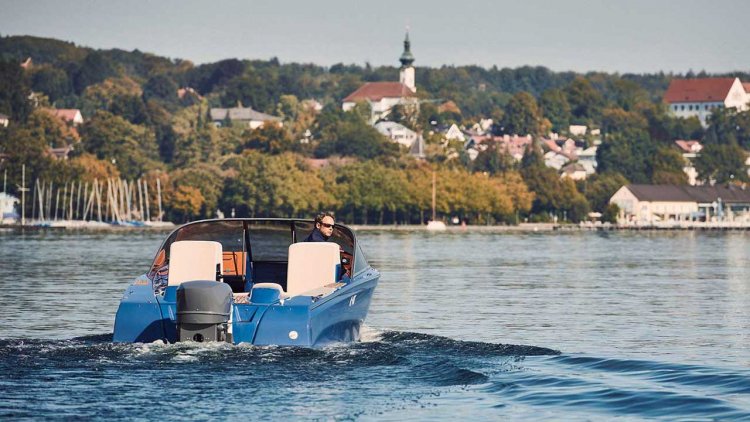VIDEO: Candela Speed Boat developed the world’s first electric hydrofoil boat
The Swedish startup Candela Speed Boat has developed the world’s first electric hydrofoil boat, using motor and batteries from Torqeedo.

The speedboat Candela Seven literally flies above the surface of the water at cruising speed, its weight resting on two underwater wings called hydrofoils. Propelled by the Torqeedo Deep Blue 50i, the boat has a top speed of 55 km/h and a range of 92 km when driven at 37 km/h.
Dr Ralf Plieninger, managing director of Torqeedo, said:
“The Candela Seven combines minimum energy consumption with maximum performance. The electric hydrofoil is a game-changer for marine electric mobility.”
Candela Speed Boat is still a startup in the conventional sense. The company only had three employees in 2017. Now, the staff numbers 35. Many of them have worked at aerospace and technology companies such as Eurocopter, Saab Gripen, and Volvo.
The Candela team was trying to crack a tough problem. A boat with a length of 7.5 meters consumes 12 to 18 times more fuel than an automobile, which is why it makes ecological and economical sense to switch from gasoline to electric motors. But since most batteries have a lower energy density than gasoline, electric boats must be optimized to have a long range or high speed, but not both. The idea behind their ambitious goal was if we want to establish viable electric transportation on the water, we need to solve the energy problem first.
The Candela Seven is 7.7 meters long and seats six. Its Deep Blue electric motor accelerates the boat smoothly and silently. For the first few meters, it feels like you’re in a very nice, standard boat. But everything changes at 27 km/h—that’s when the craft rises out of the water onto its hydrofoils.

The boat runs very smoothly on its hydrofoils - there’s no slamming into waves, and no noise. Torqeedo’s Deep Blue is one of the quietest electric motors in its class.
The Candela Seven’s design is based on insights from the field of aeronautics. The hull and deck are made of carbon fibre and weighs 180 kg. At a total weight of 1300 kg, the Candela Seven is thirty per cent lighter than a conventional fibreglass boat.
Candela has developed a ‘flight control’ system with multiple sensors that supply it with GPS, sonar, and engine data. The system then mechanically adjusts the main and aft foils on the fly. This keeps the boat steady in heavy waves or during sharp turns. And if you’re travelling through shallow water, the hydrofoils retract by tapping the touch screen.
In 2020, the plan is to quadruple production and reduce prices through automation and higher production volumes, according to Hasselskog. Torqeedo also feels that the combination of hydrofoils and electric motors has huge potential. The technology could offer ferry passengers a smoother ride or make rides in ambulance boats smoother and safer, for instance.

























































































































































